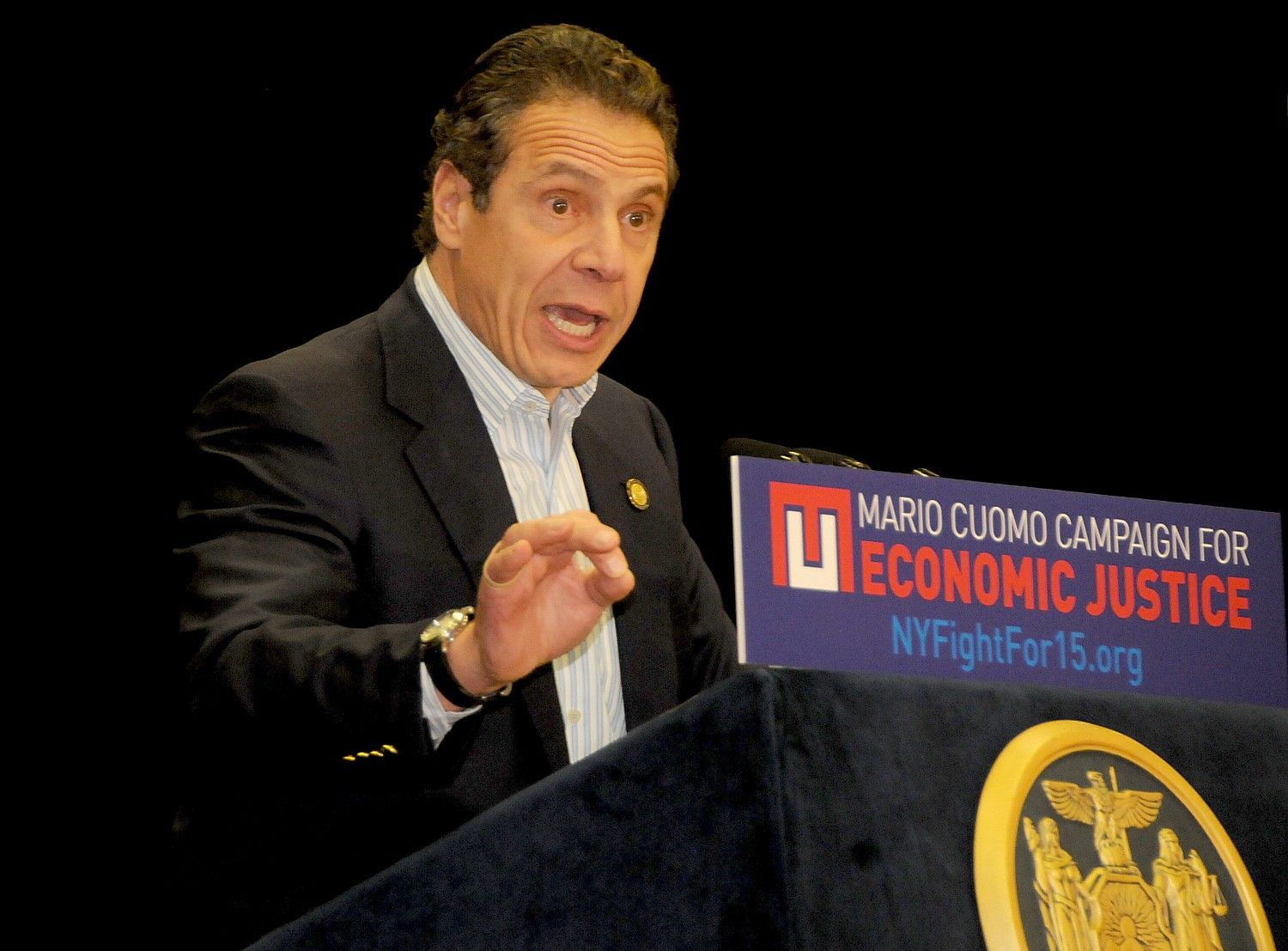By Noah Manskar
The state will not have to take any residential properties to add a third track to nearly 10 miles of the Long Island Rail Road, Gov. Andrew Cuomo announced Tuesday.
The governor asked the Metropolitan Transportation Authority to cut the estimated 20 residential acquisitions from the preliminary plans for the estimated $1.5 billion project he announced in January.
The change, along with a full review of all seven grade crossings along the 9.8-mile stretch of the LIRR’s Main Line from Floral Park to Hicksville, are steps by Cuomo to distinguish his plan from one the MTA proposed in 2005 and respond to concerns local residents and officials have voiced about the impact of construction.
“Ten years from now when we talk about it, we will say it was a no-brainer, right?” Cuomo said Tuesday at a meeting of the Long Island Association business group. “To add an additional length of track and compared to what we’ve done, and what we’ve built and who we are, this shouldn’t even be much of a question, to tell you the truth.”
The initial estimate of 50 total property takings was down from about 200 the old plan required.
Cuomo has told village officials along the Main Line that the state will work with affected communities to eliminate the seven street-level crossings as part of the project, a step local officials have called a “carrot” attached to a third-track “stick.”
The crossings are safety hazards and back up traffic in villages, Cuomo said, noting that 25 people have been killed at grade crossings since 1980.
“We brought in the local mayors; I said, “Tell us how you want to do it. It is not really rocket science,’” Cuomo told the LIA. “‘You can go under the track, you can go over the track. Tell us how you want to do it.’”
The LIA and more than 100 businesses, labor unions, non-profit groups and others have formed a coalition to support building a third track.
The group, Right Track for Long Island, cited the benefits the project would have for Long Island’s economy and transportation infrastructure.
The third track could create 2,250 construction jobs, add billions of dollars to the local economy and attract thousands of new residents while modernizing the LIRR and easing east- and westbound commutes, a statement from the group said.
“The project will change how people travel in the region and help Long Island grow its 21st-century economy,” said Nancy Rauch Douzinas, president of the Garden City-based Rauch Foundation, in a statement.
Some mayors from Main Line villages said cutting residential property takings is an improvement on the MTA’s heavily opposed 2005 plan, which Cuomo said was “not the best plan ever conceived.”
But the mayors of New Hyde Park, Floral Park and Mineola said they wondered what plans the governor has already developed and why he hasn’t shared the full preliminary plan with local officials.
“He’s talking about a transformative project — well, hopefully it’ll transform itself into a plan that he can show us,” Village of Mineola Mayor Scott Strauss said.
While third track construction itself may require no residential acquisitions, a Feb. 29 meeting New Hyde Park officials had with the state transportation department’s chief engineer indicated the elimination of grade crossings may require additional takings of commercial properties, Mayor Robert Lofaro said.
No plans are final, Lofaro said, but grade crossing elimination could also create access issues for New Hyde Park residents.
The state transportation department is currently studying traffic at New Hyde Park’s three crossings, he said.
Cuomo transportation spokeswoman Beth DeFalco said Cuomo wants to minimize commercial property takings “to whatever extent possible.”
“(T)he announcement yesterday was shaped in large part by community feedback,” she said in an email Wednesday. “We will continue to engage the community — including elected officials, community groups, and other community representatives as we move forward with the project.”
Cuomo, MTA officials and other third track planners have met several times with local officials since the governor announced the project Jan. 5.
Many in Main Line communities remain opposed to the project, citing concerns raised in the mid-2000s about construction, increased train traffic and overall effects on quality of life.
Local mayors have also said the LIRR should fix exsting infrastructure before taking on an expansive project.
Cuomo and the MTA have repeatedly said the new plan is markedly different from the old one — it will be built entirely within the LIRR’s right of way, greatly reducing the impact of construction. They have also pledged to keep residents involved in the planning process.
Right Track for Long Island’s announcement said the group is also committed to addressing community concerns.
Opponents in Floral Park have reactivated Citizens Against Rail Expansion, a coalition that pushed against the old plan, and many residents have pushed Cuomo to abandon the project on social media.
Lofaro questioned the motives of Right Track for Long Island’s members.
“Their role on this is self-serving — that they benefit from this financially, and not for the betterment of transportation requirements on Long Island,” Lofaro said.
The MTA has hired an engineer to conduct an environmental study for the project that will include community outreach, the authority has said.
Reach reporter Noah Manskar by e-mail at nmanskar@theislandnow.com or by phone at 516.307.1045 x204. Also follow us on Twitter @noahmanskar and Facebook at facebook.com/theislandnow.



